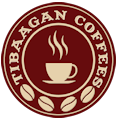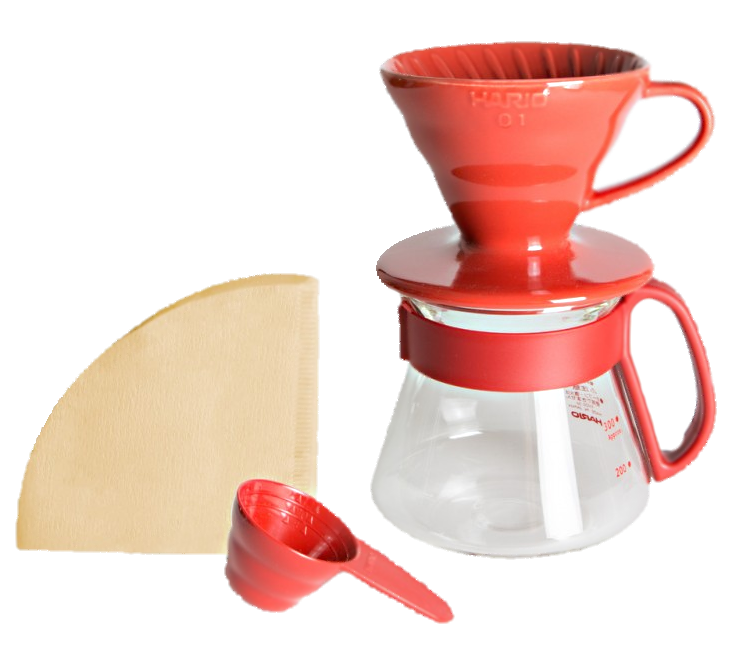Pour Over Coffee Brewing Method
The pour over method is elegant without being prohibitively difficult. For those accustomed to coffee from a drip machine, this method will produce something similar but noticeably more delicate and complex. Pour over coffee brings out the purer and more subtle flavours of coffee.
Pour over coffee starts with (freshly) ground coffee beans, a filter, and a filter holder, often called a ‘pour over dripper.’
At the most basic level, pour over brewing involves pouring water over and through the grounds to extract the coffee flavours into your cup or a carafe.
Pouring a single stream of water results in a brewing environment that’s a few degrees higher as temperature and water quality affect the overall reaction rate of the bloom (hotter, cleaner water generally means faster).
We take dry coffee grounds and make them wet and a chemical reaction occurs. One of the major byproducts of roasting coffee is carbon dioxide gas. For lighter roasted coffees, that carbon dioxide is literally trapped in the cell structure of the coffee bean, and leaches out slowly over weeks. With dark roasted coffees, the roasting process has physically roasted out most of the CO2 and it degasses within just a few days. This attribute of dark roasts (coffee roasted past the “second crack” phase) is also why I’m giving you different recommended specs for brewing below—brewing darker roasts is more efficient.
Hot water (195-205 degrees Fahrenheit) is poured from a swan neck kettle (the narrow spout maximizes pour control) in a circular motion. As the first pour touches the coffee grounds, it degasses and carbon dioxide (CO2) is released, resulting in bubbles and puffed up grounds. This is called a “bloom,” and this process influences the flavour and aromas of the brew, including increased acidity if the bloom time proceeds for too long . The reasoning behind this is that when CO2 reacts with water, it produces carbonic acid. Interestingly, lighter roasted coffee beans retain more CO2 than darker roasts .
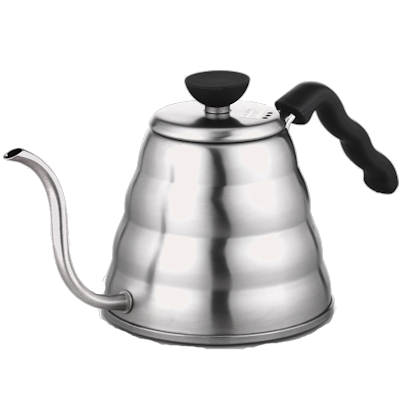 Once the gas is released, the water starts to dissolve the solubles in the coffee grounds, which are responsible for many of the flavour components. As the brew starts to drip into the decanter, additional water is poured in the same circular motion to make sure that the grounds are constantly replenished with fresh water . The grounds must always be immersed to maintain a constant temperature for the brew and to keep the chemical reactions going. This method also creates a strong osmotic pressure to extract the coffee concentrate from the grounds: since there are more coffee solutes in the grind and less in the watery environment, the solutes will want to escape through the semi-permeable cell membranes of the coffee beans. However, since water is continuously poured over the surface of the grounds, there is a possibility of over extraction from the top layer .
Once the gas is released, the water starts to dissolve the solubles in the coffee grounds, which are responsible for many of the flavour components. As the brew starts to drip into the decanter, additional water is poured in the same circular motion to make sure that the grounds are constantly replenished with fresh water . The grounds must always be immersed to maintain a constant temperature for the brew and to keep the chemical reactions going. This method also creates a strong osmotic pressure to extract the coffee concentrate from the grounds: since there are more coffee solutes in the grind and less in the watery environment, the solutes will want to escape through the semi-permeable cell membranes of the coffee beans. However, since water is continuously poured over the surface of the grounds, there is a possibility of over extraction from the top layer .
Before starting to brew coffee, wet the paper filter and warm the cup or carafe with hot water. Pour the water out then out the coffee grounds in the wet filter and start pouring the water over your coffee grounds in a circular motion.
As you start your pour over brew, you’ll want to add just enough brewing water to wet all of the grounds, then it’s good to stop and let the gas escape for about 30 seconds or so. You’ll see the bed of grounds swell and expand, resulting in what coffee professionals call a “bloom.”
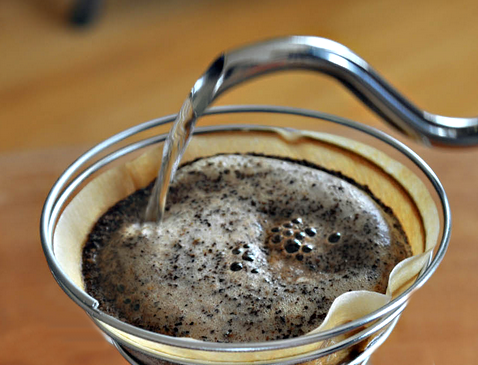 The bloom is the part of the coffee brewing process in which the gasses from the coffee are released as the water hits the grounds. It causes the grounds to grow & rise. The CO2 that is inside the bean is purged out and replaced with the water and begins the brewing/extraction process.
The bloom is the part of the coffee brewing process in which the gasses from the coffee are released as the water hits the grounds. It causes the grounds to grow & rise. The CO2 that is inside the bean is purged out and replaced with the water and begins the brewing/extraction process.
If you don’t see the bloom when you make your coffee it most likely means that the degassing has already occurred and with that the flavour compounds within the beans have deteriorated preemptively. The flavors therefore won’t be as prominent in the beverage you’re about to drink…
The bloom is not only a fascinating chemical reaction, it’s also a relevant part of the brewing process as the time you allow the coffee to be in this bloom state can have a large impact on the aromas and flavours of the cup you brew. This portion of the brewing can hold the most acidic characteristics, so if you are finding your coffee is overly bitter or perhaps too sour it may be due to the bloom time length.
Part of what makes great coffee brewing difficult is that the complex cocktail of organic substances in coffee includes both pleasant and unpalatable types. Lucky for us, it’s one of the convenient facts of coffee chemistry that the desirable and tasty solubles dissolve in water more readily than the unpleasant-tasting substances, so getting a tasty brew is all about stopping the brewing at the perfect moment—after you’ve dissolved the good flavours but before those nasty flavors start to dominate.
Diffusion is about taking that dissolved stuff and transporting it out of the coffee grounds via osmosis. The cell wall structures of our coffee grounds are semi-permeable membranes, so the osmosis pressure drives the brew out of the highly concentrated chambers of the coffee grounds out to the more watery surrounding environment.
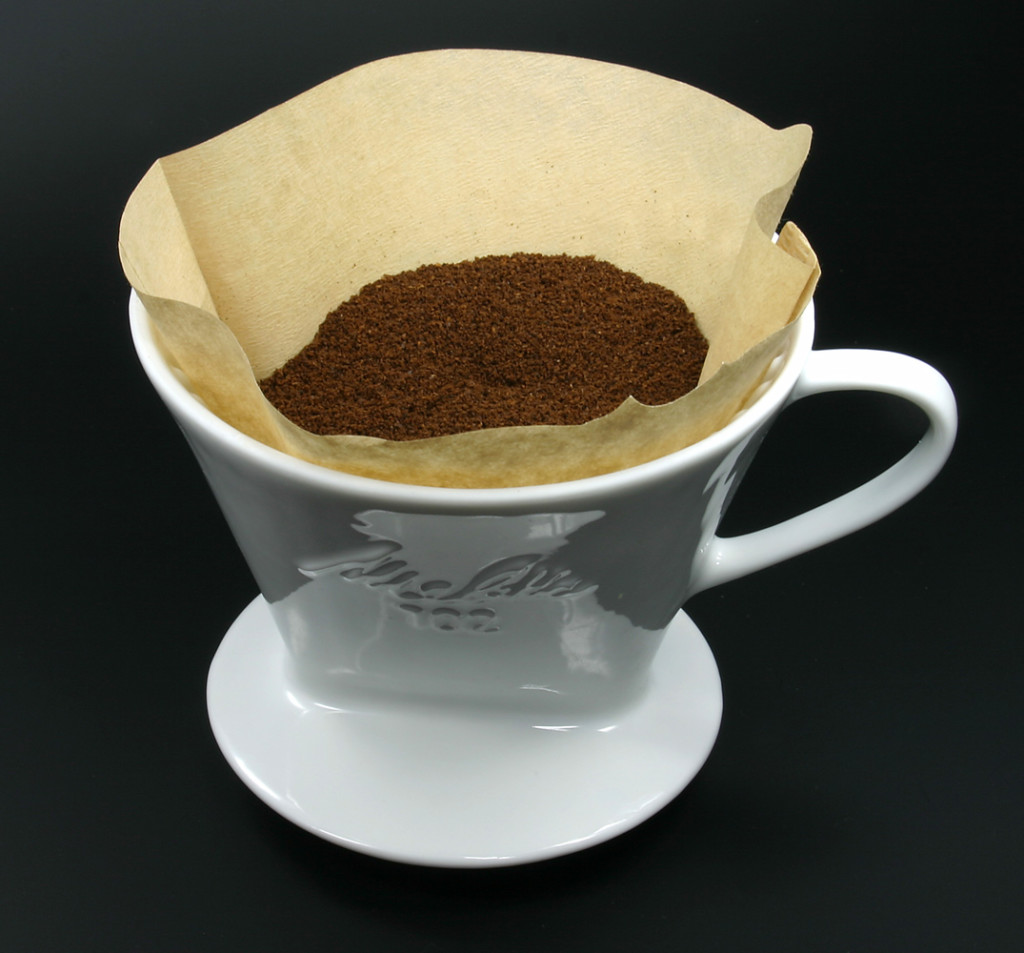 Most of the roasted coffee bean, about two thirds of the bean’s mass, is insoluble cellulose. The other third is dissolvable in water. Of that soluble third, most of it is the good stuff, particularly various organic acids and sugars. The rest are longer-chain molecules that we associate with astringent and bitter tastes. Where we find the happy balance is at the 19-20% point, that is, if you extract the first 19-20% of the mass of the coffee, we tend to find the best flavour balance. More than that and you’ll find those astringent and bitter flavours start to dominate. Less than that and you’ll find the resulting flavours thin and unbalanced, and with lighter roasted coffees, unusually sour. Timing really is what makes or breaks your coffee brew.
Most of the roasted coffee bean, about two thirds of the bean’s mass, is insoluble cellulose. The other third is dissolvable in water. Of that soluble third, most of it is the good stuff, particularly various organic acids and sugars. The rest are longer-chain molecules that we associate with astringent and bitter tastes. Where we find the happy balance is at the 19-20% point, that is, if you extract the first 19-20% of the mass of the coffee, we tend to find the best flavour balance. More than that and you’ll find those astringent and bitter flavours start to dominate. Less than that and you’ll find the resulting flavours thin and unbalanced, and with lighter roasted coffees, unusually sour. Timing really is what makes or breaks your coffee brew.
One problem we are dealing with is coffee grounds are not all exactly the same size and shape. Since the grind sizes aren’t uniform, some bits (the finest grounds, we call “fines”) will get to the nasty-flavour level before the larger sized grounds. How much you’ll have to deal with this problem depends on the quality of the grinder you’re using.
Tuning your pour over brewing means finding the right combination of grind size (coarser or finer), recipe (ratio of coffee to water), and brew time. But how quickly the water will drip through your coffee bed depends on how much the coffee bed itself slows down that flow. More coffee or finer-ground coffee will result in a slower flow, and the opposite is true as well. One of the downsides of pour over brewing is that the flow of liquid is so inextricably linked with both the grind size and bed depth. Getting the best brew can involve a lot of trial and error!
While pour over brewing doesn’t require a special pouring kettle, a narrow spout does make it easier to control what you’re doing. One of the big differences between pour over coffee and brewing coffee in a drip machine is that with pour over, you’re able to clearly observe everything that’s happening as you brew. Having a narrow-spout kettle helps maximize control, and direct water right where you want it to go.
Experiment until your obtain that perfect cup of coffee. Enjoy!

